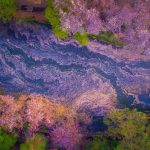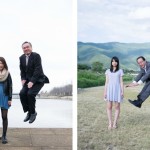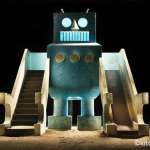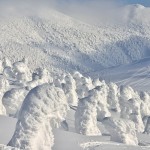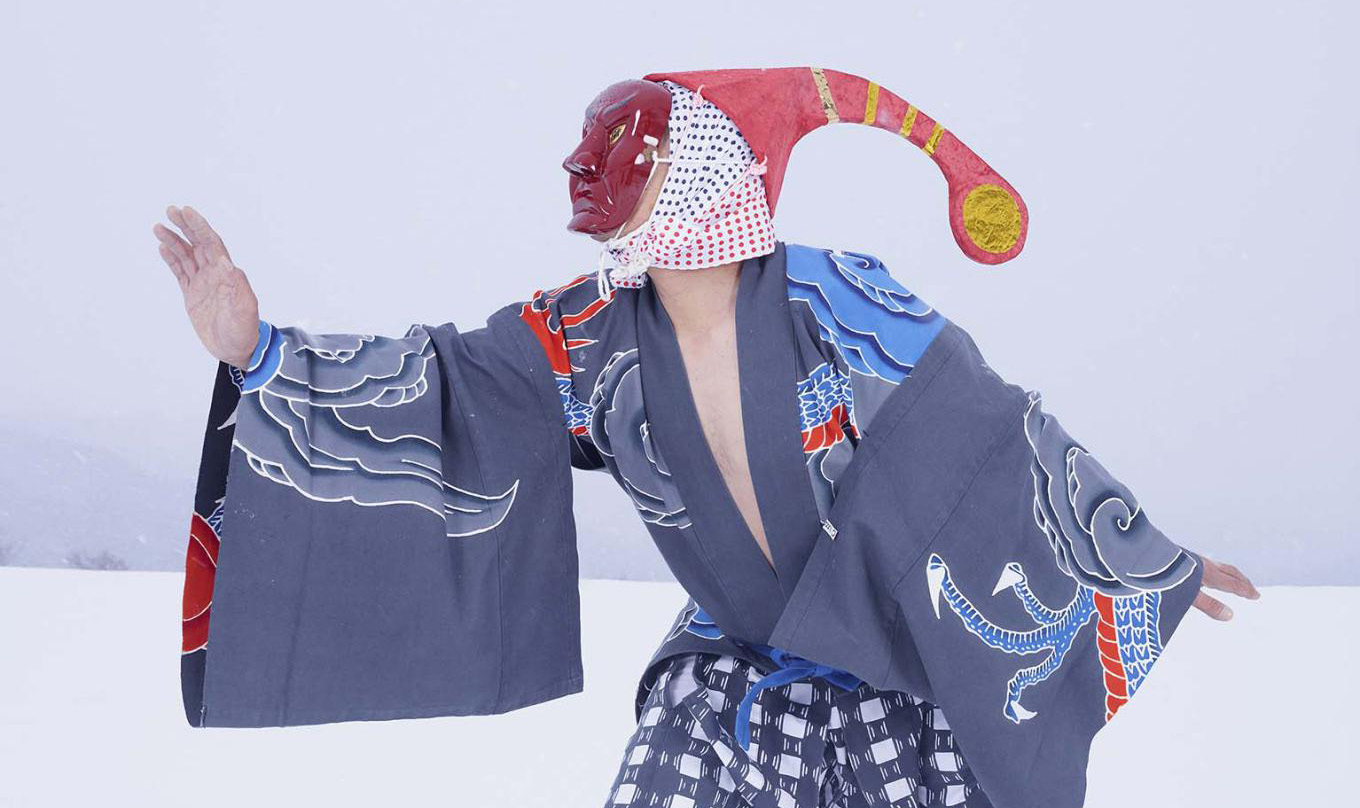
Biccharu: Ogawaji, Uozu, Toyama Prefecture | all photos © 2016 Charles Fréger
In Japanese folklore, yōkai are the various supernatural beings — most often malevolent — that inhabit the natural world and play tricks on unsuspecting humans. French photographer Charles Fréger traveled to several remote Japanese villages over a period of two years to document the kinds of yōkai portrayed in local rituals and festivals. What he captured was the cultural diversity in a nation commonly mistaken by outsiders to be homogeneous.
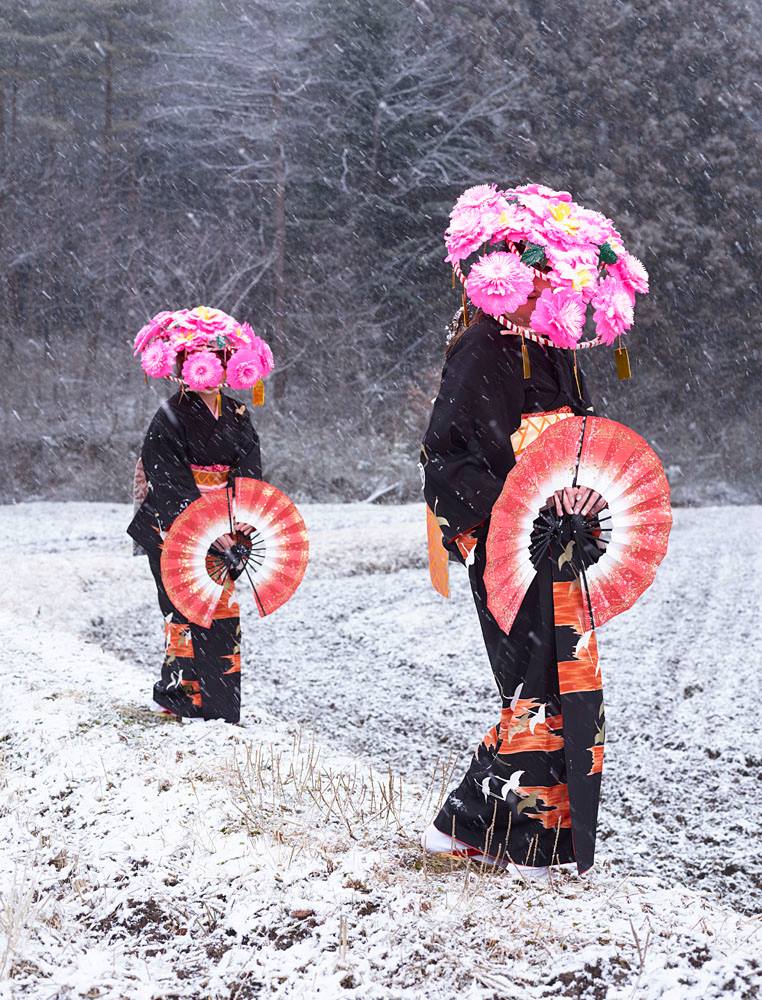
Saotome: Ayashi, Sendai, Miyagi Prefecture
Instead of photographing the festivals themselves, Fréger scouted nearby natural landscapes to act as the backdrops for the yōkai figures. This was not always an easy task due to the handmade nature of the costumes and masks, many of which were made on the day of the festival. Outside of their typical context, these yōkai appear to inhabit their own world, which is what inspired the title of Fréger’s project: Yokainoshima, or “island of monsters.”
Perhaps one of the most fascinating aspects of these yōkai costumes is the visibility of the people behind the masks. “I think there is a willingness to show that the man is still there, in control of the figure,” says Fréger. “People aren’t transformed; they are playing. What’s really apparent about Japan in this project is theatricality.”
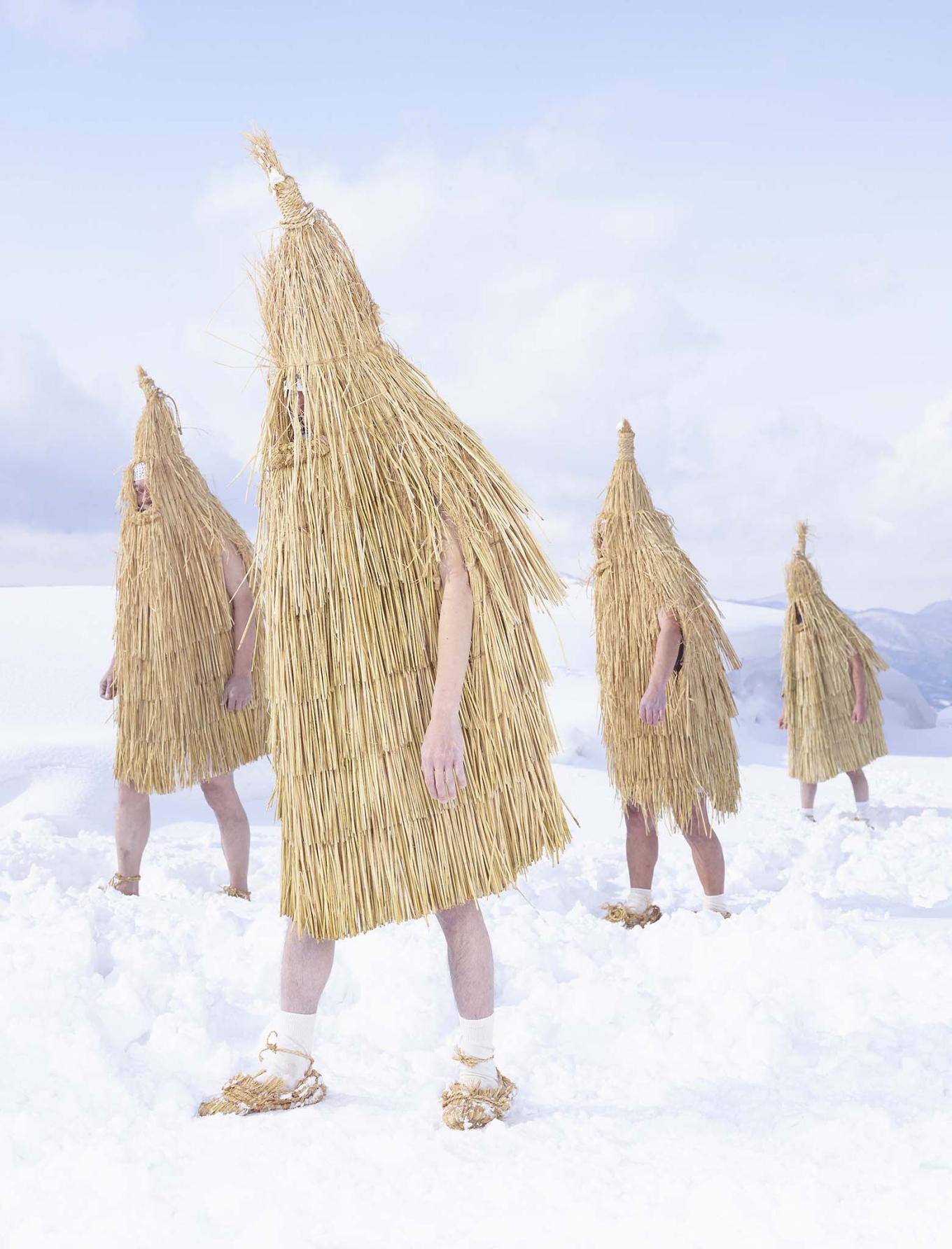
Kasedori: Kaminoyama, Yamagata Prefecture
A photobook of the Yokainoshima project was published in August 2016 by Thames & Hudson. Included in it are descriptions of the rituals and costumes by Japanese anthropologists along with illustrations by German design duo Golden Cosmos.
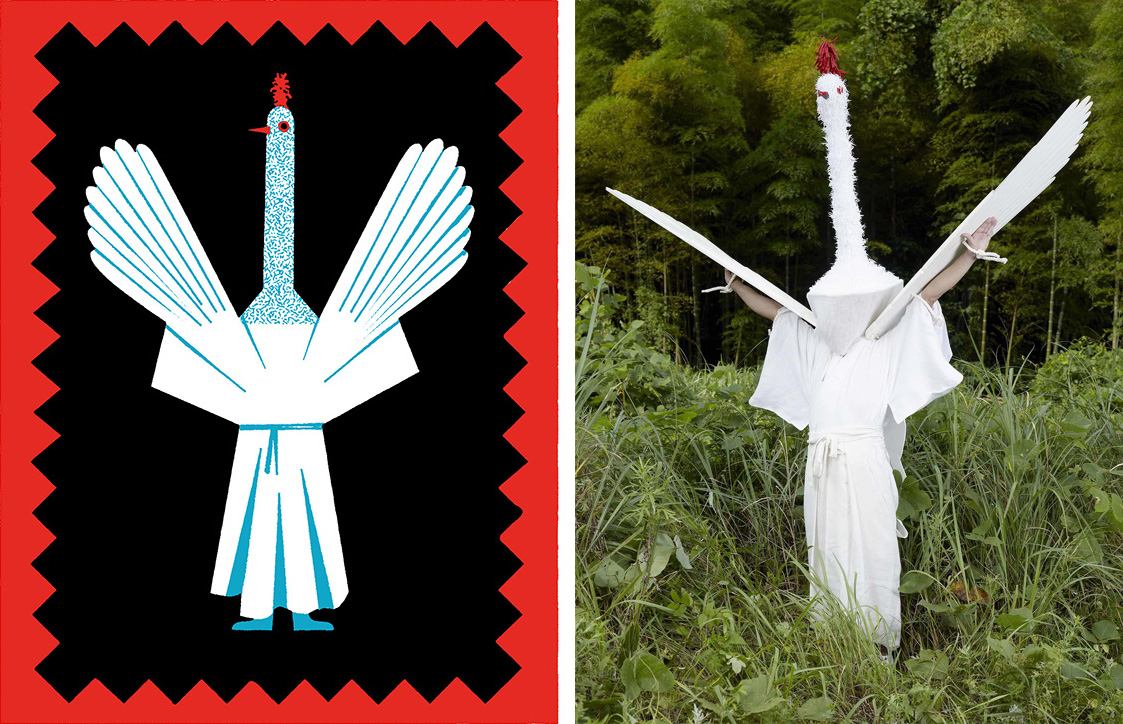
Sagi: Yamaguchi, Yamaguchi Prefecture
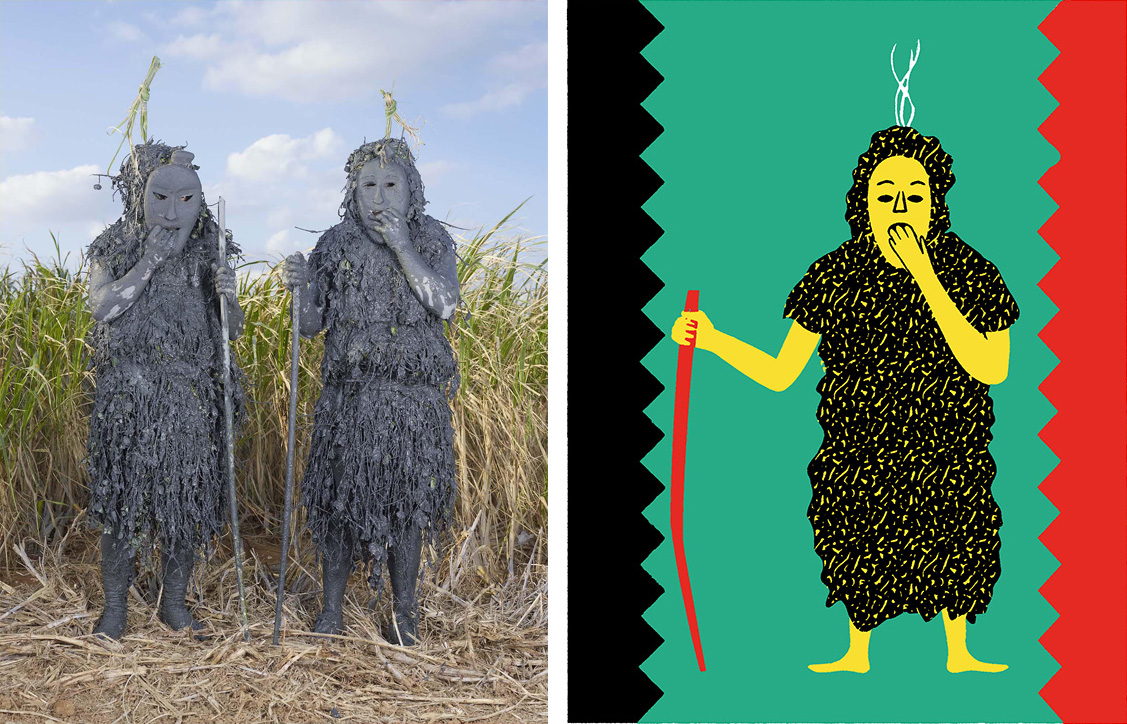
Paantu: Shimajiri, Miyakojima, Okinawa Prefecture


